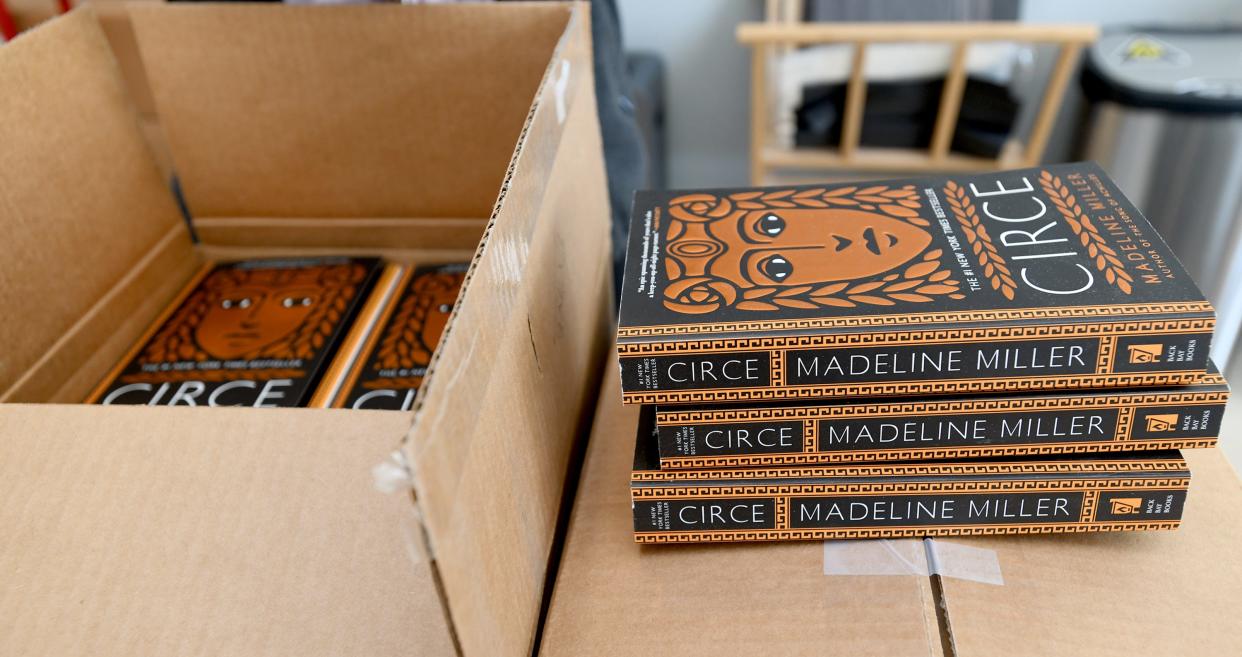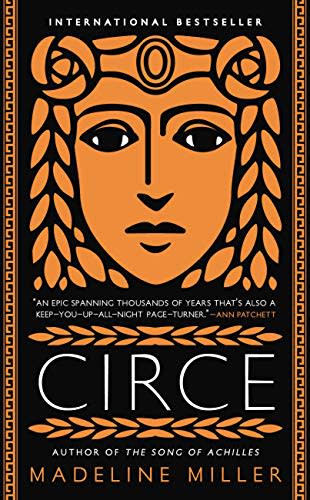My Take: Musing about mythology for this year's Big Read

The 2022 Big Read Lakeshore selection, "Circe" by Madeline Miller, explores the exposition of the enchantress who, in "The Odyssey," traps Odysseus’ men before befriending him and guiding his safe passage home.
Her character is captivating and clever, and Madeline Miller summons her voice to the forefront of a well-known and often-told tale; she is one of many characters Odysseus defeats or leaves behind in his single-minded pursuit of home. Reading The Odyssey alongside Circe will enrich your understanding of the cultural context of Ancient Greece and introduce you to the wanderer, Odysseus, who plays a supporting role to Circe in Madeline Miller’s modern myth.

When I pull my copy of The Odyssey — dog-eared, sticky-note-lined, and well-loved — from my classroom shelf each fall, it is with a mix of trepidation and anticipation. My eighth grade students at Black River have a six-week journey ahead of them, exploring the arduous adventures of Odysseus while they gain their own sense of literary grit and resilience. This year, living within a pandemic, that quality of resilience is in short supply, as it must have been for Odysseus each time the poet begged, “Sing in me, Muse, and through me tell the story of that man skilled in all ways of contending, the wanderer, harried for years on end…” (Homer I.1-3). And yet, we tell his story again, thousands of years after it was told aloud by the poets of Ancient Greece. I read "The Odyssey" aloud with my students because, as Natalie Haynes suggests in "Pandora’s Jar: Women in the Greek Myths," myths are mirrors: they show us as much about ourselves and our current reality as they reflect the timeline and ideals of Ancient Greece.

As a teacher, I love the frame story that provides structure for this epic poem, first introducing Odysseus’ faithful wife, Penelope, and newly-grown son, Telemachus, as they struggle to maintain their ground in Ithaca in the twenty-year absence of their husband, father, and king. While we often think of the monsters and dangers Odysseus faces, Penelope and Telemachus are no strangers to grief, fear, and subsequent strength in the face of great obstacles. They live in a world that does not accept their value or their voice without the partnership and support of a well-established man; anyone who has ever fought to be heard in any context can relate to these characters. While Odysseus is often noted for his wits, it is Penelope’s savvy weaving -- of both a shroud for her father-in-law and a narrative buying her more time for Odysseus’ return -- that ensures the epic poem’s satisfying resolution, for both Odysseus and readers.
When we finally meet Odysseus in book five of "The Odyssey," it is not at the beginning of his story, when he leaves the Trojan War a hero, and it is also not at the height of his glory when he returns home to defeat the suitors and reunite with his clever wife, Penelope. Instead, we meet him in medias res, in the midst of things, on the shores of Calypso’s island, longing for home, in tears and almost out of hope. This is arguably not Odysseus’ most heroic moment, but it is something we can all recognize while living in the destructive wake of COVID-19: the desire to return to the comfort and stability of what is normal and well-loved when finding ourselves at wits-end. This moment in Odysseus’ story helps us overlook both his very-human mistakes and his near-godlike strength in order to find a protagonist with whom we can relate and root for along his dangerous journey.
My students revel in Odysseus’ story within a story, since he is a master storyteller, and his very life and homeward success depend on his ability to craft a compelling narrative about his identity. We note Odysseus’ strength when he wrestles his men away from the Lotus-Eaters, question his curiosity when he explores the Cyclops’ cave, relax when Odysseus and his men finally find rest with Circe, and feel his pain when he must decide the path between Scylla and Charybdis, the original rock and a hard place. Odysseus’ role as a storyteller helps us empathize with his perspective and live vicariously through his adventures, gaining a reminder that we, too, can find resilience in our struggles.
For summer reading, add "Circe" and "The Odyssey" to your stack; their pages will whisk you away from the daily grind and into a world both imagined millennia ago and timely today.
— Karen Maria Schuen Rowe is a middle and high school teacher at Black River Public School who can often be found reading with her husband and daughter, walking her Wheaten Terrier, or paddleboarding on Lake Michigan.
This article originally appeared on The Holland Sentinel: My Take: Musing about mythology for this year's Big Read

